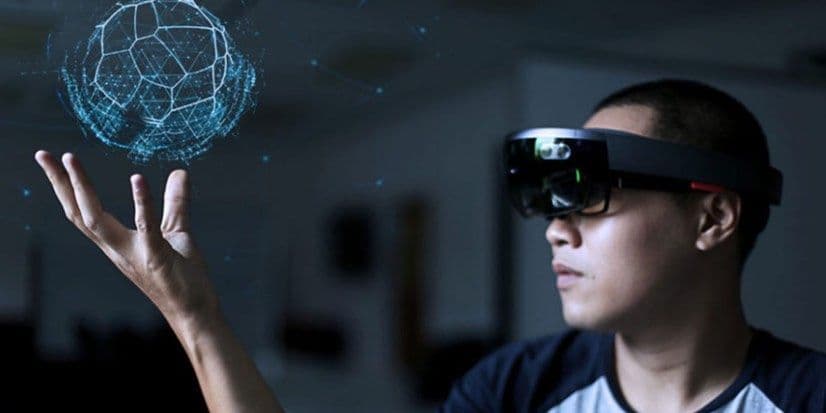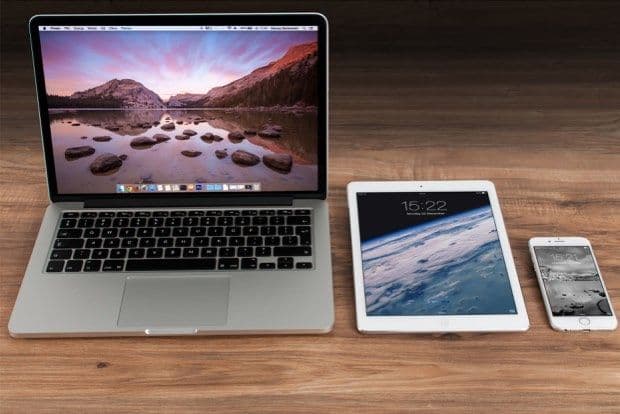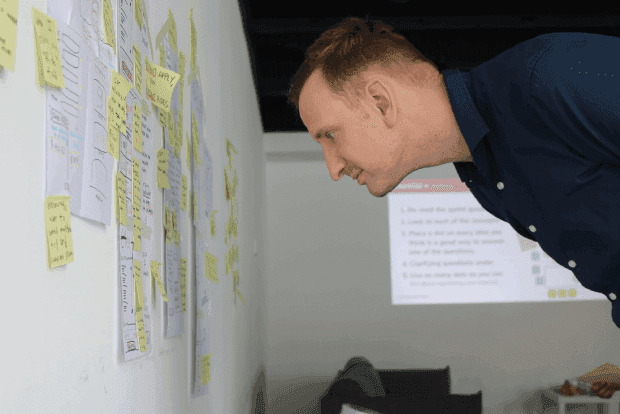extended reality
virtual reality
+ 5 more ...
Extended Reality Technologies: What's the fuss about?
17 Jul 2020
by Lotte, Digital Content Specialist
17 Jul 2020
by Lotte, Digital Content Specialist
extended reality
virtual reality
augmented reality
immersive
user experience
technology
innovation
Extended Reality Technologies: What's the fuss about?
Table of contents
Contact us
We will get back to you in the next 48 hours.

Extended reality technologies are changing the world around us, but what exactly do we mean with VR, AR, and MR?
You’ve probably heard or read about virtual reality before, as it can be seen as one of the most significant technological innovations of the past years. Perhaps you’re already familiar with the immersive experience VR has to offer, as these technologies are already widely available for the mass market consumer. Sony Interactive Entertainment introduced its first virtual reality headset for Playstation 4 in October 2016, and as of December 2019 already sold roughly 5 million VR devices worldwide. Whereas virtual reality has become a familiar term among most of us, augmented reality (AR) and mixed reality (MR) are still quite unknown phenomena in the world of extended reality technologies. In this article we’ll give you an insight into the depths of these technologies, and take a peek at their possible impact on our future.
Virtual Reality
Extended reality, or XR, is the overarching definition covering all the various technologies that enhance our perception of reality. This can be by simply offering additional information to our actual worldview, like AR and MR, or offer a total simulated virtual world for us to explore, like VR does. Virtual reality, or VR, is the most popular term when it comes to XR technologies, and revolves around the complete immersion into a virtual world, shutting down the entire real world around us. This can be in the form of simulating a certain familiar experience, like a ride in a roller coaster, or an interactive experience as a first-person character in a video game.
Here are some examples of the most widely used virtual reality devices and brands:
Virtual reality mainly gained popularity because of its entertainment purposes, like video games or immersive movies. But VR can be applied to much more than the enhancement of our amusement. More and more businesses are investing in virtual reality technologies to improve their internal business processes or customer services. Take, for example, architects or interior designers, who can now offer their customers a fully-immersive journey through their new house, that isn’t even built yet. Or what about education? Hyper-realistic driving/flying lessons in virtual reality are not only much cheaper and environmentally friendly than their real-life versions. It also takes away the possibility of real-life errors and, with that, the risk of real-life accidents and physical injuries. It offers students the opportunity to make mistakes without serious consequences, and use these mistakes as a way to learn faster. After all, making mistakes are essential in the way towards the effective development of knowledge and skill.
Augmented Reality
Augmented reality is a technology that runs on software-based recognition algorithms to “augment” graphics and sounds inputs into real world environments using the camera of your mobile device. This way, virtual elements become a part of the real world and both worlds get intertwined with one another. AR might be less immersive than the full-sense experience of virtual reality headsets, it definitely doesn’t mean it’s less exciting. Because AR technologies do not necessarily rely on additional devices like immersive headsets makes them more affordable and accessible for private use. And the unique feature of providing additional information to real world environments can be relatively easily implemented in existing business processes and strategies, especially compared to virtual reality simulations.
Some examples of augmented reality applications are:
Camera filters in applications like Snapchat and Instagram might be the most used examples of the practical application of augmented reality technologies. And who can forget the most popular AR game to this date: Pokémon GO, which allows users to find and catch virtual creatures projected into their real-world environments through their phones. As for now, the game has a total amount of downloads of more than 1 billion times! The popularity of AR games promised the possibilities of augmented reality technologies in the future, not only for gaming purposes, but also business-wise. Clothing brands are implementing AR-powered virtual changing rooms. Museums are showing additional information by offering the ability to point the camera of your mobile device towards the designated art object. And, like virtual reality, augmented reality is becoming more and more popular in educational software.
Mixed Reality
Mixed reality, or MR, is probably the least known form of extended reality technologies. And basically it is not much more than the combining of virtual reality and augmented reality resulting in the blending of the physical world with the digital world. It is seen as a technology that goes a step further than augmented reality technologies. Whereas AR has the ability to enhance a user’s perception of reality, MR has the power to blur the difference between reality and virtuality. The main difference between MR and AR lays in the type of device that’s used to interact with the software. AR depends mainly on mobile devices, while MR makes use of external devices like smart glasses. This has as a result that MR stimulates movement beyond the interaction with a mobile phone screen. Examples of mixed reality technologies are some of the following:
The practical applications of mixed reality technologies are, for example, the use of holographic and immersive devices, like smart glasses with a see-through display, which can form digital objects and project them in the users’ view. Whereas virtual reality devices fully cover the physical world with virtual simulations, mixed reality devices only cover parts of it. Already back in 2012, MR technology was used to project a 3D holographic display of Tupac Shakur, who passed away in 1996, during a performance at the popular music festival Coachella. And just like AR and VR technologies, MR can greatly improve the learning experience with educational software. For example, medical students can broaden their knowledge and skills by practicing difficult procedures on holographically displayed body parts.

A future with Extended Reality Technologies
Extended reality is one of the core technologies of our future, and not only for entertainment purposes. As you’ve read in this article, virtual reality, augmented reality, and mixed reality can also be implemented in business processes, or new educational software. And whereas MR and VR still rely on the use of considerably large and somewhat clumsy headsets or glasses, it will not take much longer for these devices to develop into sophisticated and discrete accessories. Let’s have a look at the industries that will likely greatly benefit from XR technologies in the future:
Education
Innovative educational technologies are developing rapidly, and extended reality forms a big part of this progress. Driving and flying lessons with the support of virtual reality can take away the risk of accidents or serious injuries and allows students to make mistakes without serious consequences. XR technologies can be applied to pretty much any kind of educational purpose. Virtual reality can take students to a specific place in history to really experience the events that took place there. Mixed reality can create and place digital elements like planets or any geographical phenomenon right in front of the classroom. And augmented reality can scan through course literature and provide additional information on your mobile device. The possibilities are endless and it is only a matter of time for these technologies to become an indispensable part of our educational system.
Healthcare
Healthcare can also greatly benefit from XR technologies, as it can be seen as a side-branch of education. Medical students can train on holographically displayed body parts and organs, instead of real animals or human bodies. Not only does this provide an endless amount of try-outs, and thereby saves real-life body parts that can still be used for other purposes, it also allows students to practice at home, in case they are unable to physically attend their classes. And not only physical healthcare will change, as mental healthcare can also greatly benefit from these technologies. Think of different types of therapy from the comfort of your home, by the means of VR simulation.
Travel
Augmented reality already begins to form an indispensable part of the travel and tourism industry. Real-time location tracking in combination with cameras being able to detect real-life areas and sightings can provide travelers with additional information to their current location. This can be in the form of projected videos, objects, or even instant language translations.
Real Estate
Architects, interior designers or sellers can use extended reality technologies to offer their customers or buyers an immersive experience of a certain prototype or property. This makes sure that customers and buyers can have a clear insight into the actual product, which inherently results in a higher chance of eventual customer satisfaction. By physically emerging oneself into a prototype, the client can not only experience the “look” of a design, but also the “feel”, which forms an essential part of the overall experience.
Gaming
The gaming en general entertainment industry is already being fully immersed in the implementation of XR technologies. More and more gaming consoles are launching their own virtual reality headsets. And because the gaming industry can be seen as one of the most competitive industries among all, it’s very likely that VR gaming will develop in an extraordinary innovative way.

Extended reality technologies are changing the world around us, but what exactly do we mean with VR, AR, and MR?
You’ve probably heard or read about virtual reality before, as it can be seen as one of the most significant technological innovations of the past years. Perhaps you’re already familiar with the immersive experience VR has to offer, as these technologies are already widely available for the mass market consumer. Sony Interactive Entertainment introduced its first virtual reality headset for Playstation 4 in October 2016, and as of December 2019 already sold roughly 5 million VR devices worldwide. Whereas virtual reality has become a familiar term among most of us, augmented reality (AR) and mixed reality (MR) are still quite unknown phenomena in the world of extended reality technologies. In this article we’ll give you an insight into the depths of these technologies, and take a peek at their possible impact on our future.
Virtual Reality
Extended reality, or XR, is the overarching definition covering all the various technologies that enhance our perception of reality. This can be by simply offering additional information to our actual worldview, like AR and MR, or offer a total simulated virtual world for us to explore, like VR does. Virtual reality, or VR, is the most popular term when it comes to XR technologies, and revolves around the complete immersion into a virtual world, shutting down the entire real world around us. This can be in the form of simulating a certain familiar experience, like a ride in a roller coaster, or an interactive experience as a first-person character in a video game.
Here are some examples of the most widely used virtual reality devices and brands:
Virtual reality mainly gained popularity because of its entertainment purposes, like video games or immersive movies. But VR can be applied to much more than the enhancement of our amusement. More and more businesses are investing in virtual reality technologies to improve their internal business processes or customer services. Take, for example, architects or interior designers, who can now offer their customers a fully-immersive journey through their new house, that isn’t even built yet. Or what about education? Hyper-realistic driving/flying lessons in virtual reality are not only much cheaper and environmentally friendly than their real-life versions. It also takes away the possibility of real-life errors and, with that, the risk of real-life accidents and physical injuries. It offers students the opportunity to make mistakes without serious consequences, and use these mistakes as a way to learn faster. After all, making mistakes are essential in the way towards the effective development of knowledge and skill.
Augmented Reality
Augmented reality is a technology that runs on software-based recognition algorithms to “augment” graphics and sounds inputs into real world environments using the camera of your mobile device. This way, virtual elements become a part of the real world and both worlds get intertwined with one another. AR might be less immersive than the full-sense experience of virtual reality headsets, it definitely doesn’t mean it’s less exciting. Because AR technologies do not necessarily rely on additional devices like immersive headsets makes them more affordable and accessible for private use. And the unique feature of providing additional information to real world environments can be relatively easily implemented in existing business processes and strategies, especially compared to virtual reality simulations.
Some examples of augmented reality applications are:
Camera filters in applications like Snapchat and Instagram might be the most used examples of the practical application of augmented reality technologies. And who can forget the most popular AR game to this date: Pokémon GO, which allows users to find and catch virtual creatures projected into their real-world environments through their phones. As for now, the game has a total amount of downloads of more than 1 billion times! The popularity of AR games promised the possibilities of augmented reality technologies in the future, not only for gaming purposes, but also business-wise. Clothing brands are implementing AR-powered virtual changing rooms. Museums are showing additional information by offering the ability to point the camera of your mobile device towards the designated art object. And, like virtual reality, augmented reality is becoming more and more popular in educational software.
Mixed Reality
Mixed reality, or MR, is probably the least known form of extended reality technologies. And basically it is not much more than the combining of virtual reality and augmented reality resulting in the blending of the physical world with the digital world. It is seen as a technology that goes a step further than augmented reality technologies. Whereas AR has the ability to enhance a user’s perception of reality, MR has the power to blur the difference between reality and virtuality. The main difference between MR and AR lays in the type of device that’s used to interact with the software. AR depends mainly on mobile devices, while MR makes use of external devices like smart glasses. This has as a result that MR stimulates movement beyond the interaction with a mobile phone screen. Examples of mixed reality technologies are some of the following:
The practical applications of mixed reality technologies are, for example, the use of holographic and immersive devices, like smart glasses with a see-through display, which can form digital objects and project them in the users’ view. Whereas virtual reality devices fully cover the physical world with virtual simulations, mixed reality devices only cover parts of it. Already back in 2012, MR technology was used to project a 3D holographic display of Tupac Shakur, who passed away in 1996, during a performance at the popular music festival Coachella. And just like AR and VR technologies, MR can greatly improve the learning experience with educational software. For example, medical students can broaden their knowledge and skills by practicing difficult procedures on holographically displayed body parts.

A future with Extended Reality Technologies
Extended reality is one of the core technologies of our future, and not only for entertainment purposes. As you’ve read in this article, virtual reality, augmented reality, and mixed reality can also be implemented in business processes, or new educational software. And whereas MR and VR still rely on the use of considerably large and somewhat clumsy headsets or glasses, it will not take much longer for these devices to develop into sophisticated and discrete accessories. Let’s have a look at the industries that will likely greatly benefit from XR technologies in the future:
Education
Innovative educational technologies are developing rapidly, and extended reality forms a big part of this progress. Driving and flying lessons with the support of virtual reality can take away the risk of accidents or serious injuries and allows students to make mistakes without serious consequences. XR technologies can be applied to pretty much any kind of educational purpose. Virtual reality can take students to a specific place in history to really experience the events that took place there. Mixed reality can create and place digital elements like planets or any geographical phenomenon right in front of the classroom. And augmented reality can scan through course literature and provide additional information on your mobile device. The possibilities are endless and it is only a matter of time for these technologies to become an indispensable part of our educational system.
Healthcare
Healthcare can also greatly benefit from XR technologies, as it can be seen as a side-branch of education. Medical students can train on holographically displayed body parts and organs, instead of real animals or human bodies. Not only does this provide an endless amount of try-outs, and thereby saves real-life body parts that can still be used for other purposes, it also allows students to practice at home, in case they are unable to physically attend their classes. And not only physical healthcare will change, as mental healthcare can also greatly benefit from these technologies. Think of different types of therapy from the comfort of your home, by the means of VR simulation.
Travel
Augmented reality already begins to form an indispensable part of the travel and tourism industry. Real-time location tracking in combination with cameras being able to detect real-life areas and sightings can provide travelers with additional information to their current location. This can be in the form of projected videos, objects, or even instant language translations.
Real Estate
Architects, interior designers or sellers can use extended reality technologies to offer their customers or buyers an immersive experience of a certain prototype or property. This makes sure that customers and buyers can have a clear insight into the actual product, which inherently results in a higher chance of eventual customer satisfaction. By physically emerging oneself into a prototype, the client can not only experience the “look” of a design, but also the “feel”, which forms an essential part of the overall experience.
Gaming
The gaming en general entertainment industry is already being fully immersed in the implementation of XR technologies. More and more gaming consoles are launching their own virtual reality headsets. And because the gaming industry can be seen as one of the most competitive industries among all, it’s very likely that VR gaming will develop in an extraordinary innovative way.







